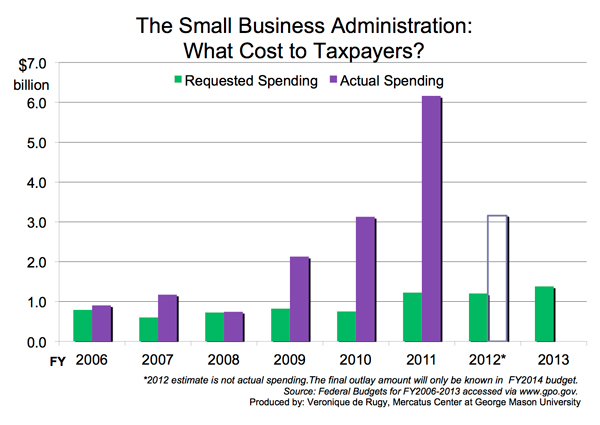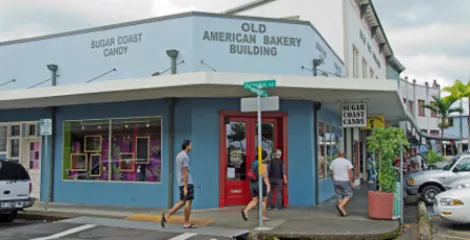- | Government Spending Government Spending
- | Data Visualizations Data Visualizations
- |
The Small Business Administration: What Cost to Taxpayers?
Small Business Administration (SBA) advocates routinely argue that the agency is economical. With the exception of the past few years, budget requests for the SBA have been consistently lower than $1 billion. Yet budget requests reveal much about the final cost of a program.
Small Business Administration (SBA) advocates routinely argue that the agency is economical. With the exception of the past few years, budget requests for the SBA have been consistently lower than $1 billion. Yet budget requests reveal much about the final cost of a program.
This week, Mercatus Center senior research fellow Veronique de Rugy examines the data from past budgets of the Small Business Administration and finds a wide gap between requested spending amounts and actual amounts spent.
From fiscal years 2006 to 2012, actual spending exceeds requested amounts nearly every year. Between 2006 and 2011, this overrun grew from $100 million to $5 billion. And SBA's actual spending in that period has grown more than 600 percent, from $905 million to $6.2 billion.
This is mainly the product of large losses because of higher default by borrowers in SBA guaranteed loan programs. In regular times, the agency's default rates are already quite high, but they increase dramatically in times of recession.
Today’s taxpayers are already on the hook for more than $90 billion in outstanding loan guarantees. As the years go by, taxpayers' exposure increases. The high failure rates on SBA-backed loans illustrate that the government's credit market interventions often misallocate capital toward wasteful ends and in an unfair manner.
Veronique de Rugy argues for abolishing the SBA in The Washington Examiner.



